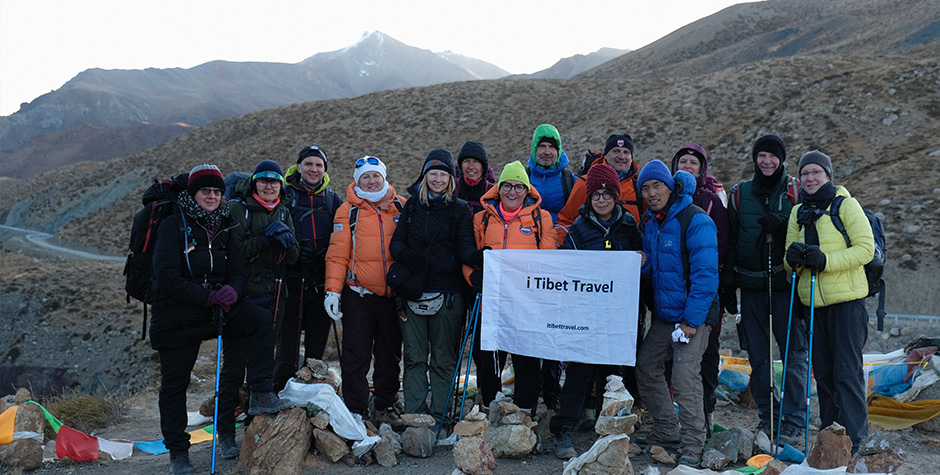Tibetan meditation is a centuries-old spiritual practice that allows individuals to cultivate inner peace, clarity, and spiritual growth. Rooted in Tibetan Buddhism, this form of meditation combines mindfulness, visualization, and mantra recitation to guide practitioners on a transformative journey. Whether you are a beginner or have some experience with meditation, learning how to practice Tibetan meditation can offer profound benefits for your well-being. In this article, we will explore the principles, techniques, and steps to incorporate Tibetan meditation into your daily life.

Introduction to Tibetan Meditation
Tibetan meditation, also known as Tibetan Buddhist meditation or Vajrayana meditation, has its roots in the rich cultural and spiritual heritage of Tibet. It emerged from the teachings of prominent Tibetan Buddhist masters and has been passed down through generations. Tibetan meditation aims to awaken the innate wisdom and compassion within individuals, leading to personal transformation and spiritual enlightenment.
Understanding the Basics of Tibetan Meditation
What is Tibetan Meditation?
Tibetan meditation is a contemplative practice that involves training the mind to achieve a state of inner peace and clarity. It goes beyond relaxation and stress reduction, providing a path for spiritual development and self-realization. Tibetan meditation incorporates various techniques, including breath awareness, visualization, mantra repetition, and analytical reflection.
The Origins and Philosophy of Tibetan Meditation
Tibetan meditation traces its origins back to ancient India and the teachings of Gautama Buddha. These teachings were later transmitted to Tibet, where they merged with indigenous practices, resulting in a unique blend of Buddhist philosophy and Tibetan cultural elements. The underlying philosophy of Tibetan meditation revolves around the concepts of impermanence, interdependence, and the ultimate nature of reality.
Key Principles and Techniques
Tibetan meditation is guided by several key principles and techniques that form its foundation. These include:
a. Mindfulness and Awareness
At the core of Tibetan meditation is the cultivation of mindfulness and awareness. Practitioners learn to observe their thoughts, emotions, and sensations without judgment or attachment, developing a deeper understanding of their inner workings.
b. Visualization
Visualization is a powerful technique used in Tibetan meditation to stimulate the imagination and enhance concentration. Practitioners visualize specific images or sacred symbols, such as Buddha figures or mandalas, to evoke certain qualities and states of mind.
c. Mantra Recitation
Mantras are sacred sounds or phrases that are chanted or recited repeatedly during meditation. They serve as a focal point for concentration and can create a profound resonance within the practitioner, leading to a heightened spiritual experience.
Benefits of Practicing Tibetan Meditation
The practice of Tibetan meditation offers a wide range of benefits for individuals seeking physical, mental, and spiritual well-being. By regularly engaging in this ancient practice, you can experience:
Physical Benefits
- Reduced stress and anxiety
- Improved sleep quality
- Enhanced immune system function
- Lower blood pressure and heart rate
Mental and Emotional Benefit
- Increased focus and concentration
- Reduced negative emotions, such as anger and fear
- Enhanced self-awareness and emotional intelligence
- Greater resilience and ability to cope with challenges
Spiritual Benefits
- Deepened connection with one's inner self
- Expanded consciousness and spiritual growth
- Cultivation of wisdom and compassion
- Awakening of the innate spiritual potential
Getting Started with Tibetan Meditation
To begin your Tibetan meditation practice, follow these steps:
Creating a Suitable Environment
Choose a quiet and peaceful space where you can meditate without distractions. Create an atmosphere that promotes relaxation and serenity, using elements such as soft lighting, candles, or incense.
Finding a Comfortable Posture
Adopt a posture that allows you to be both relaxed and alert. The traditional posture for Tibetan meditation is sitting cross-legged on a cushion or mat, with a straight back and relaxed shoulders. However, you can also choose a posture that suits your comfort, such as sitting on a chair or using meditation benches.
Focusing on the Breath
Begin your meditation by bringing your attention to the breath. Notice the sensations of inhaling and exhaling, without trying to control or manipulate your breath. Allow your breath to flow naturally, using it as an anchor to keep your mind focused and present.
Using Mantras and Visualization
Integrate the use of mantras and visualization into your practice. Choose a mantra that resonates with you and repeat it silently or aloud during your meditation. Engage in visualization by picturing a peaceful and sacred image in your mind's eye, allowing it to bring about a sense of tranquility and inner peace.
Deepening Your Tibetan Meditation Practice
As you progress in your Tibetan meditation journey, consider the following steps to deepen your practice:
Cultivating Mindfulness and Awareness
Continue developing mindfulness and awareness both during meditation and in your daily life. Pay attention to your thoughts, emotions, and sensations as they arise, maintaining a non-judgmental and compassionate attitude towards yourself and others.
Exploring Advanced Techniques
Once you have established a strong foundation, explore advanced techniques such as deity yoga, tantric practices, and dream yoga. These practices can open new dimensions of understanding and enable profound spiritual experiences.
Incorporating Rituals and Ceremonies
Tibetan Buddhism is rich in rituals and ceremonies that can enhance your meditation practice. Consider incorporating rituals such as lighting candles, offering incense, or reciting prayers as a way to deepen your connection with the spiritual realm.
Seeking Guidance from a Qualified Teacher
If possible, seek guidance from a qualified Tibetan meditation teacher or spiritual mentor. They can provide personalized instruction, answer your questions, and help you navigate the complexities of the practice. A teacher's guidance is especially valuable when delving into advanced practices.
Overcoming Challenges in Tibetan Meditation
Throughout your Tibetan meditation journey, you may encounter various challenges. Here are some strategies for overcoming them:
Dealing with Restlessness and Distractions
Restlessness and distractions are common obstacles in meditation. When faced with these challenges, acknowledge them without judgment and gently bring your focus back to your chosen meditation object, whether it's the breath, a mantra, or a visual image.
Addressing Physical Discomfort
Sitting for extended periods can sometimes cause physical discomfort. Experiment with different postures or use props like cushions or blankets to support your body. Remember to maintain a balance between relaxation and alertness.
Managing Impatience and Frustration
Meditation is a practice that requires patience and perseverance. If impatience or frustration arises, remind yourself that progress takes time. Embrace each moment of your practice, regardless of whether it feels successful or not.
Embracing the Practice as a Journey
Approach your Tibetan meditation practice with a sense of curiosity and openness. Embrace it as a lifelong journey of self-discovery and transformation, rather than a goal-oriented endeavor. Allow yourself to explore the depths of your inner being without attachment to specific outcomes.
Integrating Tibetan Meditation into Daily Life
To fully benefit from Tibetan meditation, integrate it into your daily life beyond formal meditation sessions. Consider the following suggestions:
Establishing a Regular Practice
Set aside dedicated time each day for meditation. Start with shorter sessions and gradually increase the duration as your practice deepens. Consistency is key to reaping the long-term benefits of meditation.
Applying Mindfulness in Daily Activities
Practice mindfulness throughout your day by bringing conscious awareness to your daily activities. Whether you're eating, walking, or interacting with others, be fully present and attentive to the present moment.
Bringing Meditation into Relationships
Extend the qualities cultivated in meditation, such as compassion and loving-kindness, to your interactions with others. Cultivate empathy, understanding, and patience in your relationships, fostering harmony and deep connections.
Cultivating Compassion and Loving-Kindness
Tibetan meditation emphasizes the development of compassion and loving-kindness towards all beings. Engage in loving-kindness meditation, where you extend well-wishes and positive intentions to yourself, loved ones, strangers, and even those with whom you may have difficulties.
Frequently Asked Questions (FAQs)
Can anyone practice Tibetan Meditation?
Yes, Tibetan meditation can be practiced by anyone, regardless of religious or cultural background. The techniques and principles can be adapted to suit individual preferences and needs.
How long should I meditate each day?
The duration of your daily meditation practice can vary depending on your schedule and personal preference. Starting with 10-15 minutes a day and gradually increasing the duration to 30 minutes or more can be a good approach.
Is it necessary to have a specific religious belief to practice Tibetan Meditation?
Tibetan meditation is rooted in Tibetan Buddhism, but it is not necessary to adhere to specific religious beliefs to practice it. The techniques and principles can be approached from a secular perspective, focusing on mindfulness and self-transformation.
What is the best time of day to meditate?
The best time to meditate is subjective and depends on individual preferences. Some people find early morning or evenings to be conducive to meditation, while others may choose a time that aligns with their daily routine. Experiment with different times to find what works best for you.
Can Tibetan Meditation help with stress and anxiety?
Yes, Tibetan meditation can be a powerful tool for managing stress and anxiety. Regular practice can help calm the mind, reduce the effects of stress on the body, and promote emotional well-being.
Conclusion
Tibetan meditation offers a profound path for personal growth, spiritual development, and well-being. By incorporating the principles and techniques of Tibetan meditation into your life, you can cultivate inner peace, clarity, and a deep connection with your true self. Start with the basics, develop a regular practice, and explore advanced techniques under the guidance of a qualified teacher. Embrace the journey, overcome challenges with patience, and integrate mindfulness and compassion into your daily life. Discover the transformative power of Tibetan meditation and embark on a path of self-discovery and spiritual awakening.
About Tibet Travel & Tours
Tibet Travel & Tours is a local travel agency in Tibet that offers unique and authentic experiences to travelers from all around the world. As a leading tour operator in Tibet, we provide high-quality Tibet Travel services that are tailored to our clients' needs and preferences.
Our team of experienced and knowledgeable professionals strives to ensure that our clients have a hassle-free and memorable trip in Tibet. We specialize in various types of tours, including cultural tours, trekking and hiking tours, and adventure tours.
Our commitment to providing exceptional service has earned us a reputation as one of the best local travel agencies in Tibet. Contact us today to plan your unforgettable trip to Tibet.
Explore Tibet with a local Tibetan Travel Agency
If you're looking to explore Tibet, starting your journey with a reputable Tibetan travel agency in Tibet is crucial. Tibet Travel & Tours is a great choice to begin your adventure with their extensive knowledge of the region and commitment to responsible tourism.
Their Tibet tour packages cater to a range of interests and budgets, making it easy to plan a trip that suits your needs. Before embarking on your tibet tour, it's essential to have the right Tibet travel information and necessary documents, including a Tibet travel permit.
The Tibet Travel Planner provided by i-Tibet travel is an excellent resource to plan your trip, including tips on what to pack, where to stay, and what to see.
For beginners, the "About Tibet" guide provided by i-Tibet travel offers a comprehensive overview of the region's history, culture, and top attractions. So, start your Tibet travel plan here with i-Tibet travel and discover the magic of Tibet for yourself.










